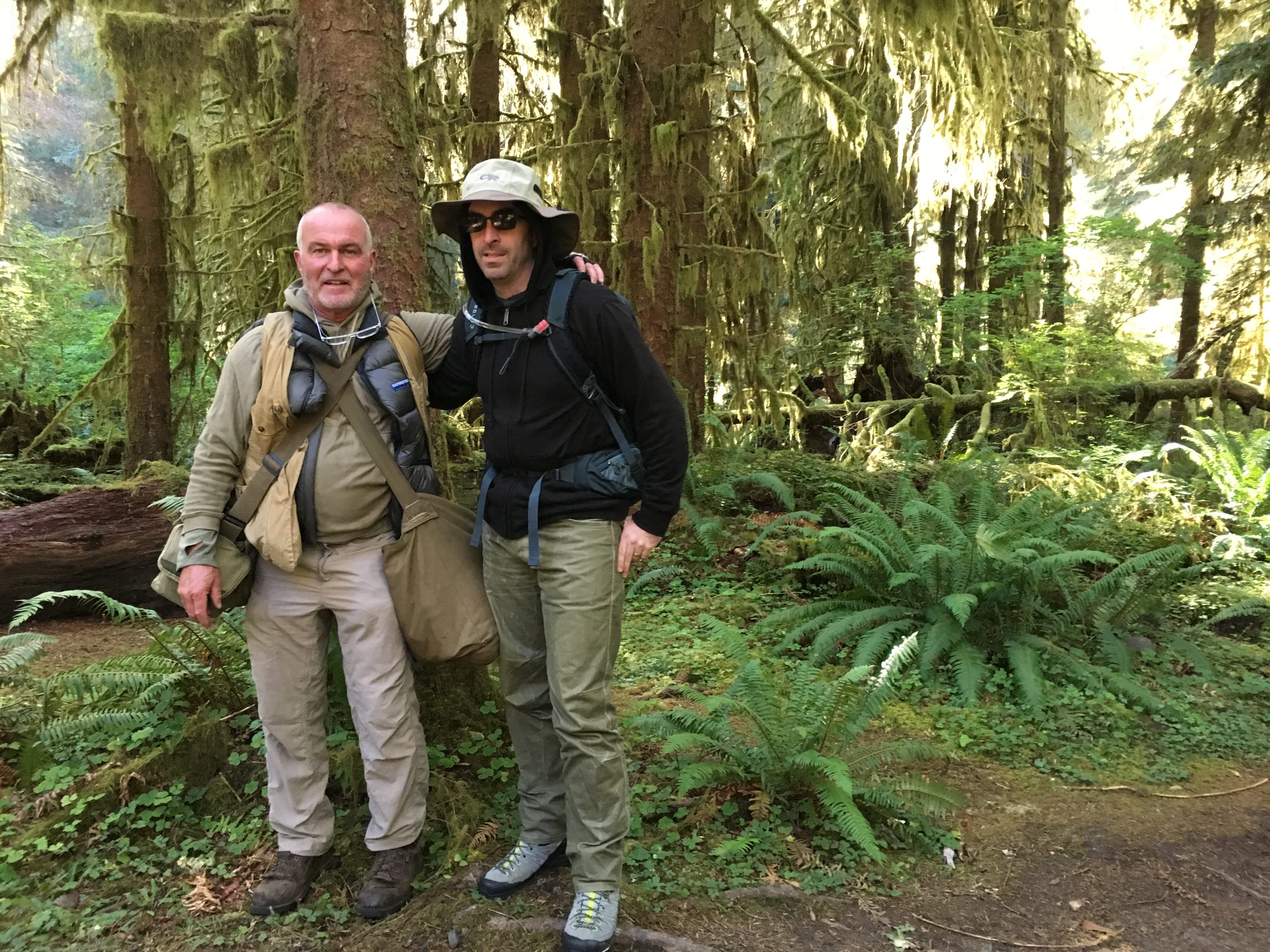
I’ve heard some really great things in the past about the Wild Eyes recording workshop. Our own Luca Fusi did a write up about his experience. We’ve also recently heard about other similar workshops in South Africa and Australia. While it’s great to see the availability of these, my schedule is so unpredictable that it’s hard to commit to attending one. I started this year looking at what it would take to pull off something similar here in the U.S.; something I might have a chance of actually attending. While I haven’t entirely given up on that idea, it proved too difficult…or really, time consuming…to coordinate in the near future. Something I hadn’t actually realized though, was that there actually is an intensive retreat available within the continental United States. It’s a little more expensive than Wild Eyes, but it’s also far more personal and individualized. Actually, if you account for the fact that you’re only flying domestically instead of internationally (for those in the U.S.), it ends up at about the same cost…and you get to spend your time working with Gordon Hempton!
To prime you for what’s to follow, Gordon does not do group workshops. He provides one-on-one tutorials where he spends time getting to know you, your abilities, your gear, and then caters his approach to the outings based on all of these factors. His prime focus is on developing how you listen to a space and the sonic sources within it. Yes, he will…and is happy to…speak about techniques for selecting locations to record and the technical aspects of working with the gear. But he really wants you to consider your gut and how you feel when selecting microphone placement once you’re physically in those locations. I spent a few days with Gordon near his home on the Olympic Peninsula of Washington State, in and around Olympic National Park. I thought it would be helpful to document the experience, so other people in the community can decide if it’s something they’d like to try themselves.
So let’s get some of the logistical items crossed off the list first. First, there are no set dates for these sessions. It’s simply a matter of finding dates that fit both your and Gordon’s schedules. Getting to Gordon’s isn’t particularly hard, but it’s not exactly a short trip either. I spent somewhere between 3 and 3.5 hours driving to his property after landing in Seattle’s Seatac airport. It’s a little retreat near his home that he uses for the purposes of these tutorials. When you work with Gordon, you get to stay in a comfortable little cabin; which is completely yours (Gordon’s got his own accommodations just up the hill). It has electricity, but the toiletry facilities are a bit more rustic. We’re talking outhouses and an outdoor propane heated bathtub. Gordon’s big on privacy for both you and himself, and you’ll get things sorted pretty easily. The outhouse is shared, the bathtub is your’s alone. And I have to say, soaking in a hot bath under the trees after a long day of hiking and recording feels pretty spectacular. You’re not required to stay with Gordon, but it’s free with the tutorial/workshop booking (as is food). You probably could stay at a hotel in the nearby town, but that is going to increase your costs, and would also decrease your time with Gordon and the wilderness immersion.
Our first day recording was spent out at the Salt Creek Recreation Area. The 1.5/2 mile hike was moderately strenuous…at least, when you consider the gear we were carrying. On the trip out to a secluded cove, we stopped several times to discuss the lay of the land and how to identify areas that would provide unique activity for recordings throughout the year. The trip out also included stops for listening assignments and some brief discussions of their results. I found these particularly interesting, as they brought to mind approaches I could take in my regular design/editorial work. It’s possible that I had already been subconsciously taking some of these approaches, but I always prefer having solid explanations and reasoning to present to clients when they ask me why I’ve used them. After this trip, I feel a bit better prepared to explain some of my more esoteric gut design decisions.
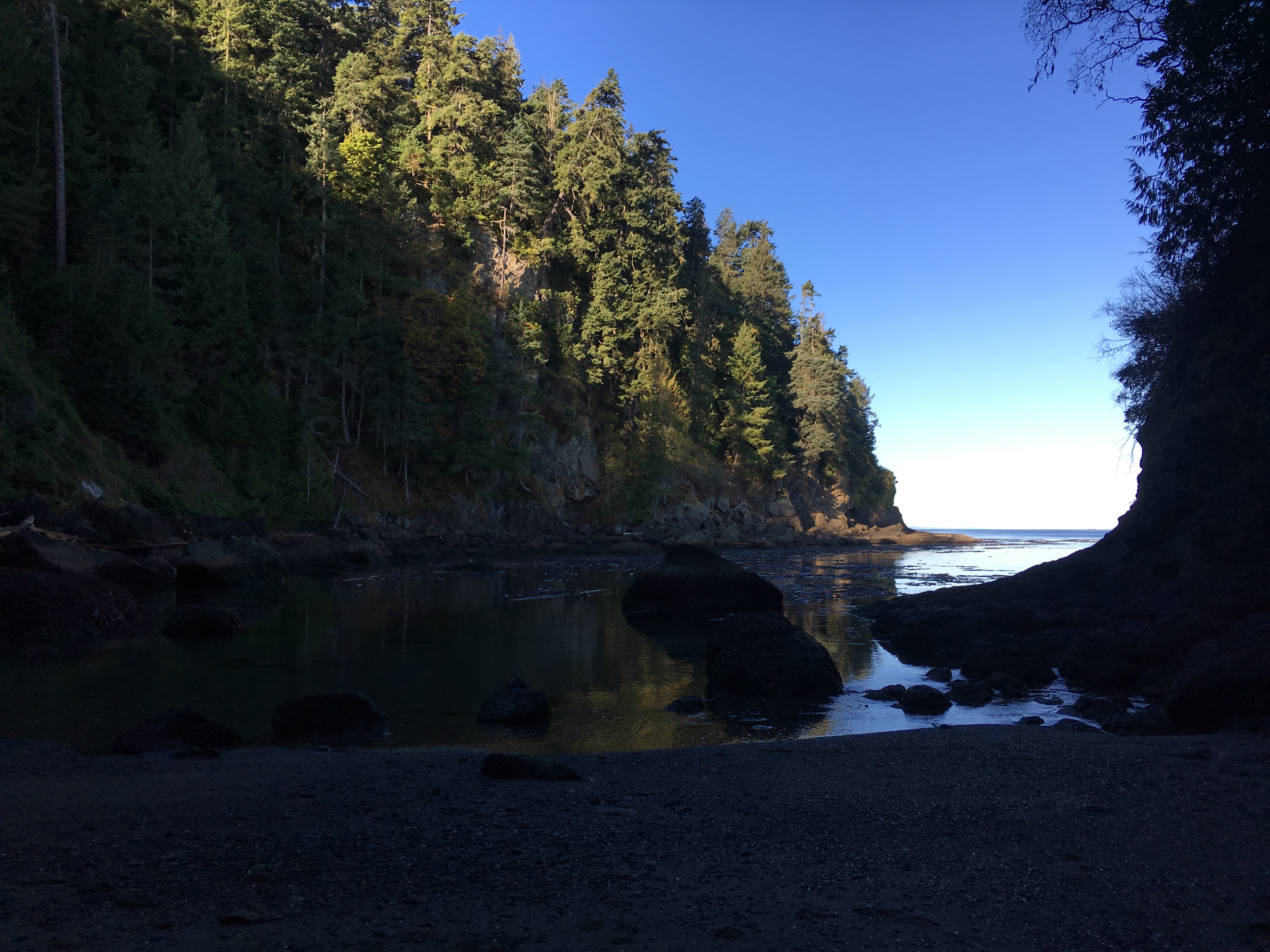
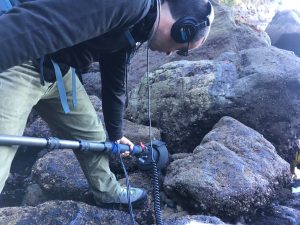
Once we arrived at the cove, Gordon had me take some time to play around with his Neumann binaural head. By using a headphone splitter, I had the opportunity to focus on how my positioning of the head affected the sound while he rode the gain knob. I was encouraged to spend time recording in both positions I liked, and those I didn’t. The aim was to focus on self analysis and connect with the underlying reasoning that told me, “This is a good spot,” or “This sucks. I should move.” It was an interesting experiment that I haven’t tried before. I usually correct my positioning pretty quickly if I’m not happy with it, and have rarely bothered to analyze why I feel that way.
We also spent time experimenting with Gordon’s hydrophone in the tidal pools around the cove. Afterwards, I broke out my gear and gave Gordon a quick rundown of it and the decisions that had gone into what to bring and how I packed it all for hiking. This included all of the support equipment (tripods, cables, battery systems, etc.), as well as the trade-offs I accepted to limit form factor and ease of transport. I took the time to do some (what I refer to as) semi-surround recordings of the cove with my Neumann RSM-191 M/S mic and a matched pair Schoeps omnis/jecklin disc combo. Other than a Sony PCM-D50, this is all I brought with me for this trip. Then it was time to hike back and head down the road to another beach, where we spent more time discussing elements of the environment and how they might affect our recordings, how we could potentially take advantage of them in our recordings and…of course…recording.
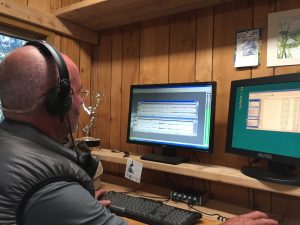
The day finished up with an exchange of our respective editorial and archival processes, with Gordon demonstrating his. We also reviewed and critiqued both of our recordings. We exchanged notes on gear cleaning and maintenance post field recording sessions, actually did just that, and prepped ourselves for the next day’s excursion.
Day two took us out to the Hoh Valley Rain Forest. This was a full day trek, and we spent much more time in the early portion of our hike discussing the information the environment presents to us through its sonic elements. This day’s non-recording exercises were focused on interpreting the space around us. We then moved on to discuss the emotional results of those interpretations. Gordon is firm on the need to connect emotionally with your recordings. For him, the best recordings are the ones that leave you with an impression. They make you feel something, anything really…but preferably what the recordist intends when they’ve placed the mic and hit record. The recording tasks for the day were to take those discussions and apply them to our placement process.
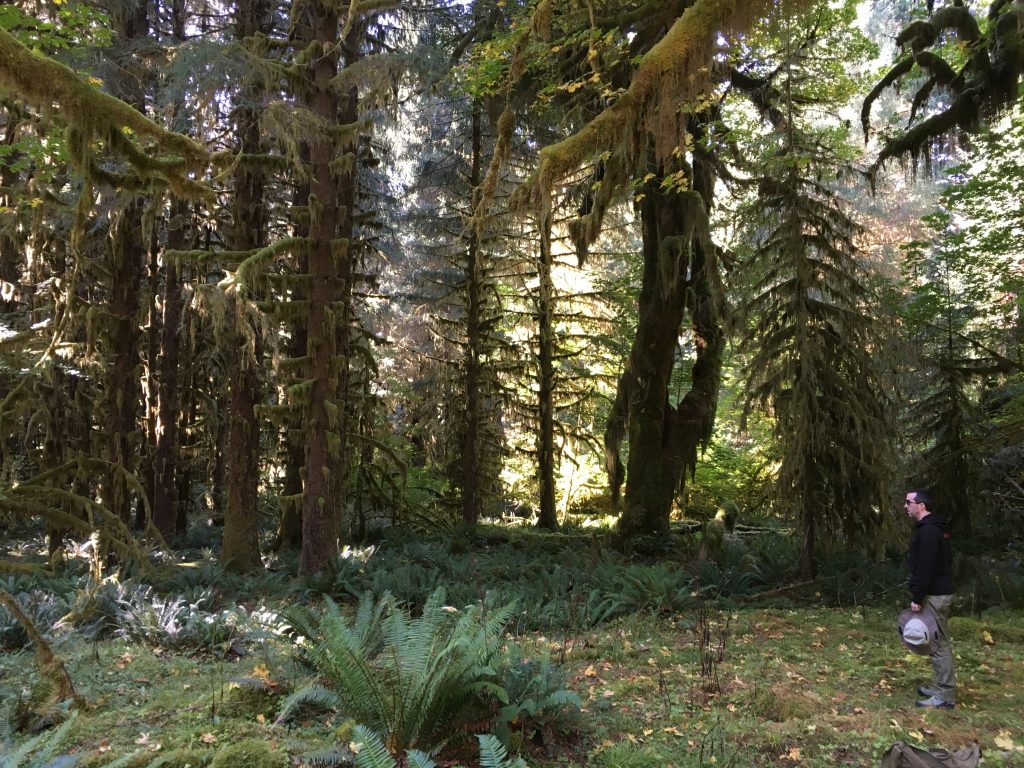
The first recording stop was slightly open spot along the trail that runs parallel to the Hoh River. This spot was my selection. We had been passing up numerous spots before hand, because of the lack of separation and details in the distant sound of the river. It was basically indistinguishable from distant wind, or maybe traffic wash. This spot was a nice compromise on that, because the light wind could get through and move the foliage. So it sounded like that foliage movement might co-opt the distant river wash and sell that sound AS wind. We recorded with my Schoeps/jecklin combo and Gordon’s modified SASS.
We stopped at two streams to explore recording possibilities in that situation. While prepping to set up at the second, another hiker notified us of a small group of elk just 5 minutes up the trail from where we were. Naturally, we skipped the stream and went to see what this opportunity might present. There was one bull, several cows, and at least one calf. We initially circled around behind them, then shifted back out to the trail. We did our best to keep a safe distance, and had to quickly shift positions a number of times as they ambled in our direction. Sorry, I don’t have any pictures, but I did capture some vocalizations!
After that we headed back to the second stream and finished our original goal. We had brought bag lunches, which were left in the truck back at the parking lot. The plan had been to come back and have them for lunch, but they turned into our dinner for the evening. After eating, we returned back to base to offload our recordings and prep for the final day’s outing…Rialto Beach.
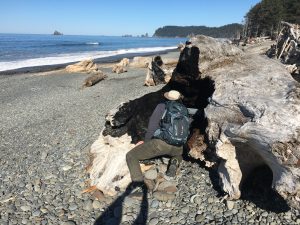
Gordon is very fond of this site, and was keen to share the joys of discovering the various means of EQ through mic placement using occlusion and reflections from the large pieces of driftwood on the beach. This is a rocky beach, which means there are some interesting opportunities for sonic details as the waves wash up and off the beach…particularly as the tide came in. Gordon initially left me to my own devices, giving me the opportunity to explore the beach and soundscape on my terms. I identified several spots I wanted to record in, discussed those with Gordon, then broke the gear out. Afterwards, Gordon led me around the beach pointing out features that he wanted me to explore. I did this with both my Neumann RSM-191, and his Neumann binaural head. [ed. I didn’t mention this earlier, but that sucker is HEAVY!]
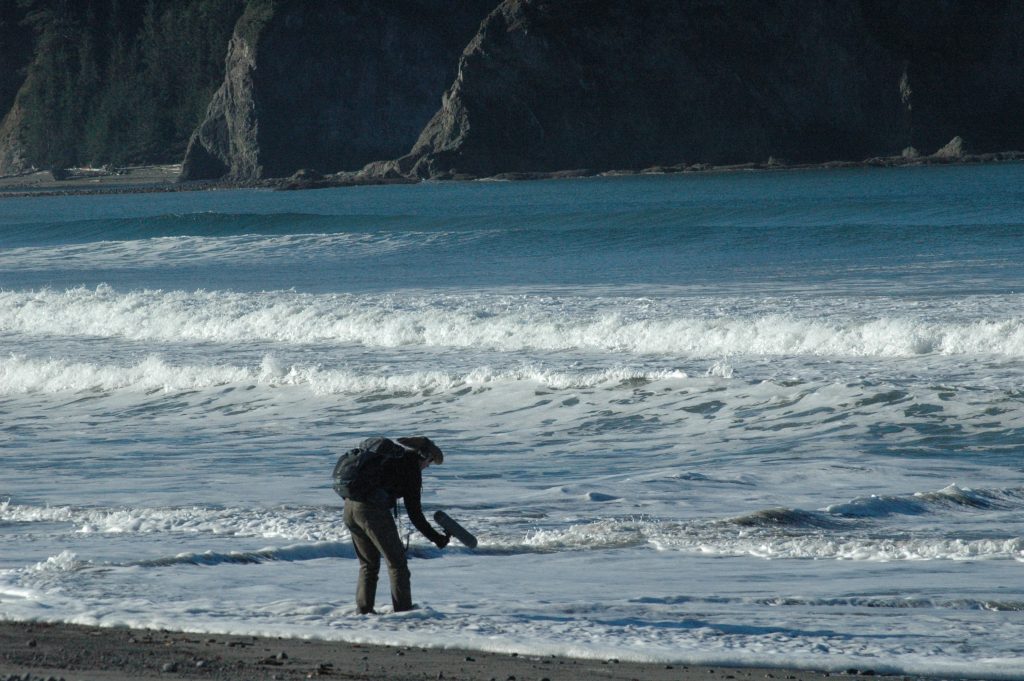
This was a fun day, and an interesting contrast to the cove we visited on our first trip. Where the cove was sheltered and mild, Rialto beach was open, energetic, and loud. I came away with an interesting range of surf sounds, and a greater appreciation of the intricacies of working with the binaural head. After returning and cleaning up our gear, we pulled in our files from both this and the previous day…having run out of time after Hoh Valley Rainforest. We jumped through the various recordings, taking time to compare the jecklin disc and SASS recordings. There’s a notable difference there. Not necessarily a preference, they’re just different sounds. Since they’re both somewhat obscure recording methods, I though I’d provide some files for you to audition. [ed. They’re also available for download, so you can give them a listen on your monitors of choice.]
Both were recorded through the same cables, to the same inputs on the same Sound Devices recorder, with the same gain setting. The modified SASS (with Sennhesier MKH20’s) gave a hotter signal. I’ve level matched the Schoeps/jecklin combo so you can better compare the tonality and spatialization of each rig.
Gordon likes to give a final feedback session on the last day, talking about what the student can do to continue to hone/improve their craft. He didn’t really offer me any advice, saying that he thinks I’ve found the right gear for how I like to work and my aesthetic sensibilities, and was impressed with my proficiency with all of it. This comes on the tail of a compliment he gave me after our first day of recording, “It’s hard to train a pro.” I’m sincerely flattered by these comments, but I also think that it comes from a truly humble man. Yes, I’m well versed in the technical side of field recording. When it comes to using the gear that I’ve owned for years, I’d better know how to use it effectively. The real gems of learning in this tutorial came from the discussions Gordon and I had. Gordon is incredibly knowledgable about the ecosystems around him, and has a wealth of experience in using the features of the land to supplement and inform the recordings he’s making. There were a lot of things that sound like simple common sense when you hear them, but can be revelatory in nature when you think about them in the broader concepts of sound design. I’ve got a lot of new information and ideas that have shifted from subconscious to conscious thought to bring back to my work; whether I’m recording effects or building a scene in post. So with that in mind, I’d say that pretty much everyone will find something of significant value in Gordon’s training.
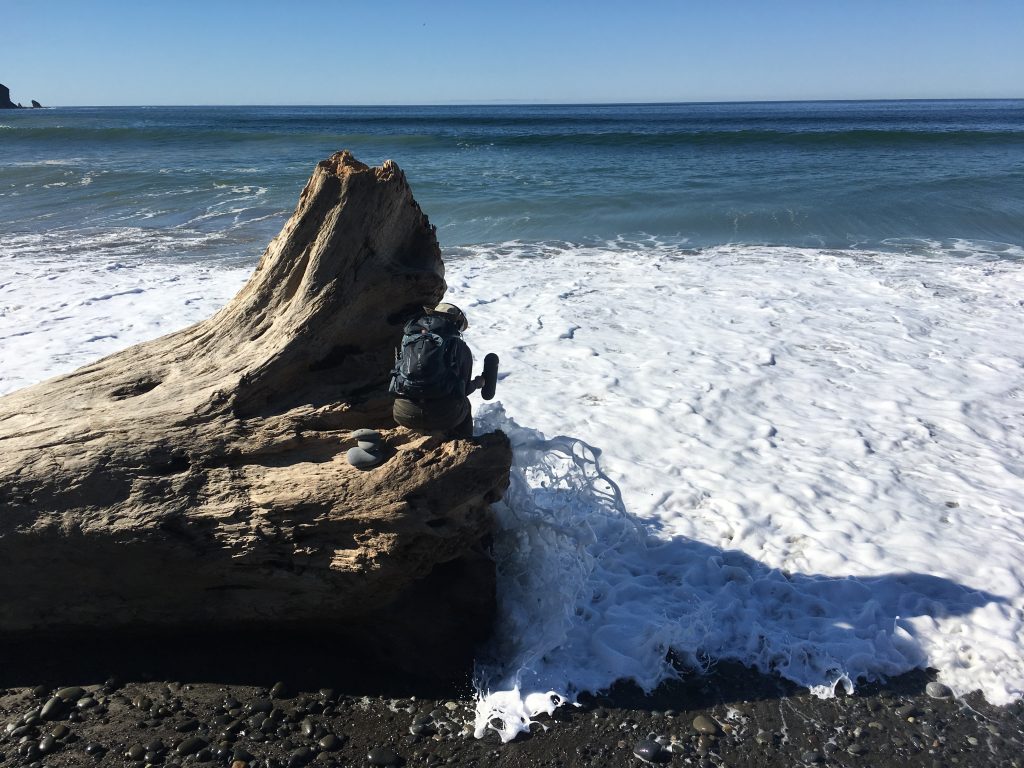
As mentioned previously, Gordon’s tutorials are provided one-on-one. They are available with flexible dates in the Spring and Fall, and can be scheduled for a span of three, four or five days. There are a few caveats to keep in mind before contacting him.
Gordon suggests that tutorials be scheduled in the spring months, because there is a much wider variety of wildlife activity to take advantage of. My schedule didn’t really allow that, and this is why I did it in the fall. If you do pursue a Spring tutorial, it will be more intensive than the one I’ve described. Frogs and insects are active until late into the evening, and birds/the dawn chorus require early morning commitments. So you’re actually going to spend some time camping out in the wild. Fall tutorials are far more relaxed in their pace (you won’t be sleeping out in the woods), but also yield a narrower range of results.
The five day tutorials are really only geared to the complete sound neophyte (have never touched a microphone, don’t know how to open a “.wav” file in an editor…don’t know what a “.wav” file is, etc.). If you’re reading our site, it’s highly unlikely that you qualify for that term. For people with a bit more experience, you’ll be looking at the three or four day sessions. Which you choose really depends on your budget and how many recording locations you want to visit.
The fee you pay is all inclusive (minus traveling to Gordon, of course). Once there, he provides meals, lodging and transportation. You can bring your own gear to work with, or work exclusively with his. Even if you do bring your own, you’ll be working with his during the course of the tutorial. And you get to take home all of the recordings from your time with him; not just yours, you take home original recordings by Gordon as well. It was a terrific experience, and I’d highly recommend anyone interested in the opportunity to contact Gordon. It’s well worth your time!
For information about the tutorials, including fees, contact Gordon through his Quiet Planet website. Because he thinks that many of our readers will be able to glean a large portion of the tutorial’s curriculum and content through his latest book, “The Earth is a Solar Powered Jukebox,” he’s offering a free download of the ebook for 24 hours. You can access it here. (download is no longer available)